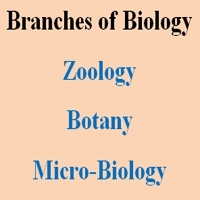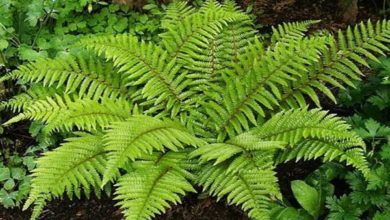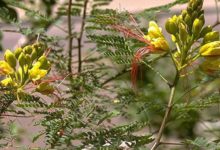Phylum Annelida Examples and Characteristics
Coelomates-The segmented Worms - Earthworm Phylum
The word Annelids is derived from the Latin word annellum having meaning “rings”. they are a group of  invertebrate animals and are known as roundworms. Aulophorus, Tree worm, and Leech are common Annelida Examples.triploblastic and bilateral symmetry is common characteristics of annelids.
invertebrate animals and are known as roundworms. Aulophorus, Tree worm, and Leech are common Annelida Examples.triploblastic and bilateral symmetry is common characteristics of annelids.
This is a Complete Guide About Phylum Annelida Examples and Characteristics.
This article You’ll Learn:
- What is Annelida (Definition)
- Some Annelida Examples
- Common name
- habitat of Annelida
- classes and more….!
Let’s get started.
General Characters of Phylum Annelida
1. It included the most common worms. They are segmented and commonly called annelids. Annelida is a Latin word that means “little ring”. The body is metamerically segmented. It this case, the body is divided transversely into a number of similar parts of segments. There are constrictions on the body surface. So the division of the body into segments can be seen externally.
These segments are separate1 internally by septa. This septum extends across the coelom. However, different systems of the body like the gut, blood vessels, and nerve cord penetrate each individual segment. So they run throughout the length of the body.
- Body characters: Annelida is triploblastic and coelomate. They have bilateral symmetry. The annelids show specialization in body structure.
The organ systems are well developed.
- Habitat:
- They may be marine like Nereis.
- Some are fresh-water like Styria.
- Annelida found in damp soil like Earth-Worm.
- Some are parasites like Hirudo.
- Digestive system: The digestive system is in the form of the alimentary canal. It is divided into distinct parts. Each part performs a specific function. It has two openings. Mouth ¡s present at anterior end and anus is present at the posterior end. The mouth is overhung by a lobed structure called prostomium.
- Coelom: Annelida has a true coelom. Their mesoderm splits into two layers. The outer parietal layer lines the body wall. The inner visceral layer which forms covers the alimentary canal. The space between these two layers of mesoderm is called coelom. It is filled by coelomic fluid. It also acts as a hydrostatic skeleton (skeleton produced due to the pressure of fluid within the body).
- Excretory system: Excretion takes place by a specialized structure called nephridia. These are ciliated organs. A pair of nephridia is present in the body cavity of each segment.
- Nervous system: A well-developed central nervous system is present in each segment. It consists of a simple brain and ventral cord. This nerve cord ¡s solid and double. It runs in the longitudinal direction. Small nerves arise from the nerve cord in each segment.
- Circulatory system: Annelids are the first group of invertebrates that have developed and closed the blood vascular system. In the closed vascular system, blood moves in closed blood vessels. It transports gases and nutrients.
- Respiratory system: The respiratory system is absent. The exchange of gases takes place by capillaries present in the skin. The skin is kept moist by mucous and coelomic fluid.
- Locomotion: The body also contains muscles. These muscles help in locomotion. These muscles are of two types:
- Circular muscles: These are arranged along the radius of the body.
- Longitudinal muscles: These are arranged along the length of the body.
Locomotion takes place by the interaction of muscles and hydrostatic skeleton. The circular muscles contract and produce pressure on the coelomic fluid. This pressure forces the body to elongate.
Similarly, the contraction of longitudinal muscles produces pressure in the coelomic fluid. This pressure makes the body-wide. They have chitinous chaetae or setae which help in locomotion. The chaetae are embedded in sacs or parapodia. These parapodia are present in the body wall, e.g. Nereis. The chaetae are absent in leech.
- Reproduction: The common method of reproduction is sexual. Most of the annelids like earthworm and leech are hermaphrodite. Sexes are separate in some annelids like Nereis. Fertilization is external. They produce free-swimming Trochophore larva during their life cycle.
- Burrowing Activities: Earthworms form burrows in the soil. It increases the penetration of air into the soil. It also improves the drainage capacity of the soil. Annelida also enables the roots to grow downwards through the soil more easily. It brings the inorganic particles to the surface form the lower region of the earth. In this way, it causes the mixing and churning (breaking into pieces) of the soil. The earthworm is the most active segmented worm for the churning of soil. So it is commonly called natural plow.
18 Phylum Annelida Examples
- Alitta virens
- Minho
- Aulophorus
- Earthworm
- Korean
- Gusarapa
- Spirograph
- Worms
- Glycera
- Nephtys hombergii
- Tubifex tubifex
- Nereis
- Tomopteriskils
- Palolo
- Tree worm
- Sea mouse
- Leech
- Sabellastarte indicates
Classification of Phylum Annelida
Phylum Annelida is divided into three classes.
- Class Polychaeta
- Class Oligochaeta.
- Hirudinea Class.
Class Polychaeta
- They have a distinct head region. This head has eyes and structures known as palps and tentacles.
- The organs of locomotion are parapodia.
- They are mostly aquatic (marine).
- Sexes are usually separate.
- They form trochophore larva during their development.
- Important examples are Nereis, Chaetopterus.
Class Oligochaeta
- The Head region is not prominent or distinct.
- These animals have internal and external segmentation.
- The organ of locomotion is setae.
- They may be terrestrial or aquatic.
- They are hermaphrodite (bisexual).
- No larva is formed during development.
Examples: Lumbricus Terrestris, Pheretima Posthuma (earthworms).
Class Hirudinea
- No distinct head is present but leaches have chitinous jaws. It is used to puncture the skin of the host.
- They produce an anticoagulant secretion. This secretion ¡s passed into the wound of the host. It allows the smooth flow of blood into its digestive system. This blood is stored in the digestive system for a long time.
- Their bodies have a fixed number of segments. Each segment has additional circular rings or markings called annuli.
- They do not have the organ of locomotion. They move due to the contraction of their body and with the help of suckers.
- Mostly they are hermaphrodite.
- Trochophore larva is formed during their development.
Examples: Hirudo medicinalis (medicinal leech).
Watch Video About Phylum Annelids Examples and Characteristics
Other Related Phyla:
- phylum Porifera Characteristics & Examples
- Phylum Chordata Characteristics & Classification
- Characteristics of Phylum Echinodermata
- Phylum Nematoda Characteristics, Examples
- Phylum Mollusca Characteristics and Examples
- Phylum Arthropoda Characteristics and Examples
- Phylum Platyhelminthes Characteristics and Examples






